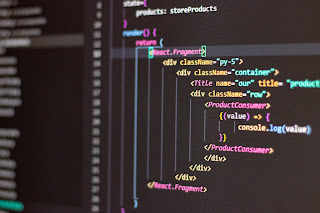HTML attribute and Tags
HTML Color
We can set background, text, border, color using HTML element
For Example
<h1 style -"background-Color: DodgerBlue;">Hello World</h1>
<p Style ="background-color:tomato;"> hello world</p>
HTML HyperLinks
HTML links are called hyperlinks
After clicking the link you can transfer to another page.
<a> defines the hyperlink
<a href="url">link text </a>
HTML Images
Image can improve the good experience of a webpage.
<img src="pic_trulli.jpg" alt="Italian Trulli">
<img> for Image tag
<src> specifies the path of image
<alt> alternate image name
Image map
HTML <map> tag defines an image map. after clicking the image, you will redirect to another page.
<area> defines clickable area inside an image map
<picture> define Container for multiple image resources
Using CSS we add an Image background on an HTNL Page.
body {
background-image: url('img_girl.jpg');
}
HTML Table Padding
Using the CSS we can apply it to the space between the cell and cell Content.
<DIV> Elements
<div> element is used as Container for other Html element.
Class attribute
the class attribute used to specify one or more classes for an Html element
the element will be styled according to all the classes specified
ID attributes
the id attribute is used to specify a unique id for Html elements
Id attribute must be Unique in the Html file.
Html Iframe
The iframe is used to display a webpage within a webpage.
<iframe> - it's specify an inline frame
Script tag
<scripte> tag used to define a client-side script(javascript).
it's used for image manipulation, form validation, and dynamic changes in Content.
java script most often use the doncument.getElementbyId() method.
<script>
document.getElementById("demo").innerHTML = "Hello JavaScript!";
</script>
Link attribute
<link> element defines the relationship between this document and external resources.
Html Layouts
html has the defferent parts of a webpages-
<header> - Defines a header of a document or a section
<nav> - Defines a set of navigation links
<section> - Defines a section in a document
<article> - Defines an independent, self-contained content in page
<aside> - Defines content aside from the content (like a sidebar)
<footer> - Defines a footer for a document or a section
<details> - Defines additional details that the user can open and close on demand
<summary> - Defines a heading for the <details> element
Responsive web design is about creating a web page that looks good on all devices!
a responsive design will automatically adjust for different screen sizes and viewports. mobile tablet, computer
<meta name="viewport" content="width=device-width, initial-scale=1.0">
The <kbd> element defines keyboard input
The <samp> element defines sample output from a computer program
The <code> element defines a piece of computer code
The <var> element defines a variable in programming or in a mathematical expression
The <pre> element defines preformatted text
Using Emojis in HTML
Emojis are characters from UTF-8 Charset:
<html>
<head>
<meta charset="UTF-8">
</head>
<body>
<h1>Sized Emojis</h1>
<p style="font-size:48px">
😀 😄 😍 💗
</p>
</body>
</html>
* If you found this article useful, share it.*
MS SQL Server interview questions for developers ~ SoftCodeLearner
Join telegram group - https://t.me/softwareCodeLearner


No comments:
Post a Comment